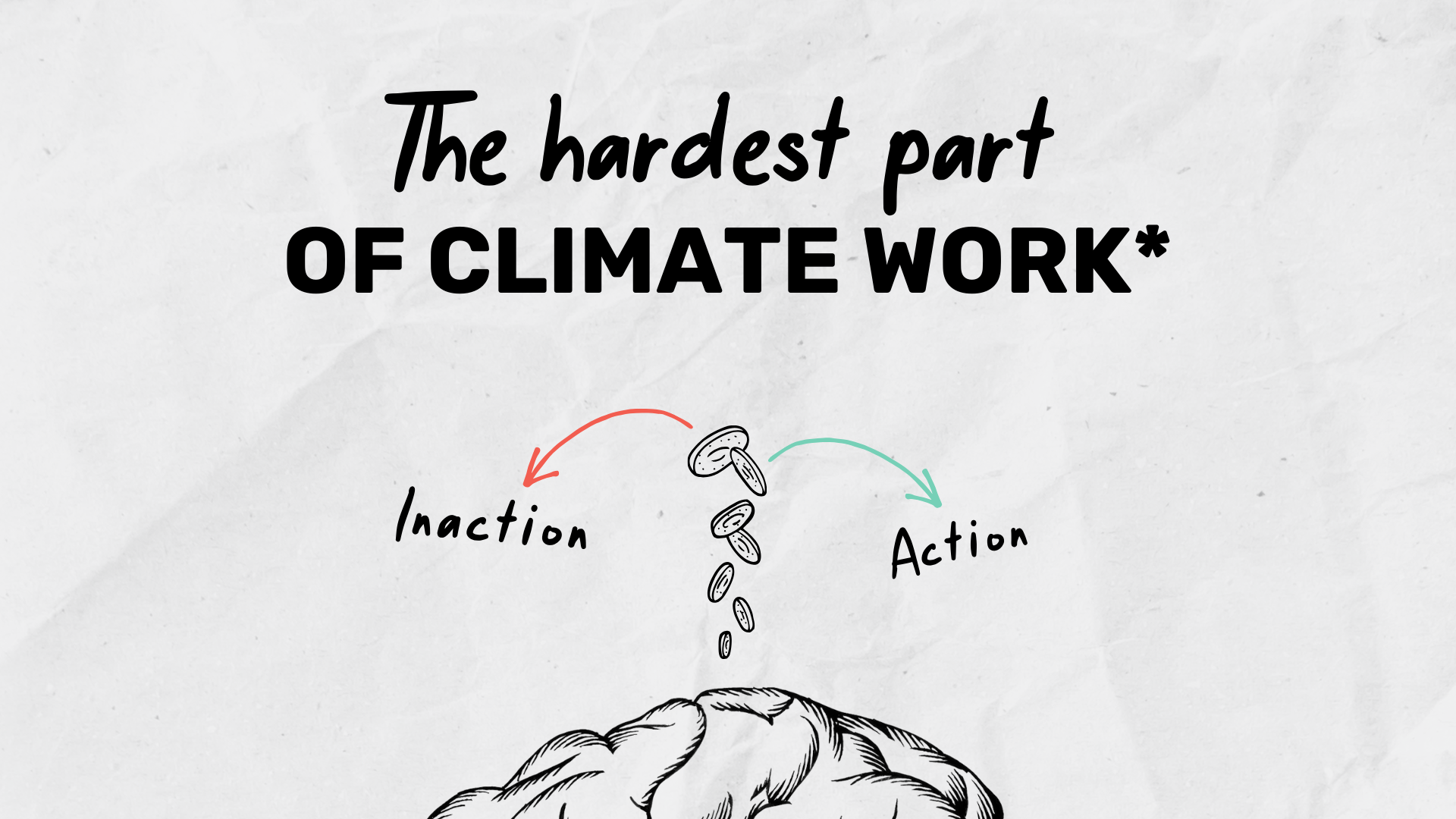5 Psychological barriers to connecting with your audience
What if we stopped trying to convince and instead started connecting? In this entry we'll look at creating campaigns with impact. How changing behavior starts with the way you talk to your target audience.
It’s not about you
Last week, I joined a change maker session hosted by The Good Wave, an organization for effective climate action in Belgium.
The session was given by Fien Louwagie, no stranger to environmental action and climate coaching.
The focus? Campaigns that have impact.
The bigger idea? Nudge human behavior.
More specifically:
What keeps people from changing, even when they know they should?
How can we design communication that helps them move forward anyway.
It was a refreshing space, filled with people from all walks of life: policy, urban planning, food systems, medicine, science communication, activism,...
I would recommend going out and surrounding yourself with other profiles working in sustainability and climate. There’s a lot to learn from the shared experience in this niche! 👇
What’s holding people back
Here’s the big lesson I want to share with you today:
If we want our communication to create change, we need to start speaking to their emotions, how they see themselves (their identities) and their lived experiences.
It truly starts with understanding who you’re talking to. What they care about. What makes them hesitate. What stories they believe about themselves.
We’ve actually talked about this before in our podcast with Ryan O’Donnell, so I’ll leave this here for the folks who are new to this blog 🙋🏻♂️
To understand this, Fien shared 5 psychological barriers (or “biases”) that can make or break a message. I’ve taken the creative liberty to elaborate on them below:
Cognitive barriers
In-group vs. Out-group
People are more likely to listen when the message comes from someone they identify with. If your audience sees you as “other,” they’ll often dismiss your message before they even process it. That’s why who delivers the message can be just as important as what it says. An idea here would be to work with messengers your target audience trusts (like peers, community leaders, relatable ambassadors, influencers,...) and who can speak the language of the “in-group”.
Framing
Words are not neutral. You might have noticed the way you describe a problem (or solution) can trigger completely different emotional reactions. For example, “climate crisis” sounds more urgent than “climate change” and “plant based meal” evokes something different than “vegan”. Framing shapes the perception of your message, so choose words that invite action, not defensiveness.
Loss Aversion
Psychologically speaking, many of us fear the loss of something we care about more than the desire we have to gain something new. If a message focuses on what people have to give up (“No more flying! No more meat!”), they’ll often resist it. Instead, zoom in on what they’ll gain. Health, community, cleaner air, a ✨better future✨. Reframe your narrative so the sustainable choice feels like an upgrade, not a sacrifice.
Paradox of Choice
When you have too many options it can lead to overwhelm and inaction. Have you tried picking a show on Netflix with your food getting cold and getting increasingly frustrated (or is that just me)? When people don’t know what to choose, they default to doing nothing. That’s why it helps to offer the one next step they can take. Important here is to make the sustainable option feel like the “normal” one. This is where things like a default choice (e.g. veggie meals by default, instead of meat) become powerful tools for change.
Social Proof
We’re constantly influenced by others, especially peers or people we admire. When a behavior feels socially accepted or even trendy, we’re more likely to adopt it. Highlighting that “millions are already making the shift” or “your colleagues are already doing this” makes it easier for someone to feel like they’re simply joining the movement, not starting from scratch. There is strength in numbers, so we can also use that to nudge behavior.
Takeaways
What stood out to me most is how often we communicate based on what we think is compelling, rather than what our audience needs to feel safe, seen and motivated.
❌ Not: “These are the facts we need you to understand”
✅ But: “This is why this information is important to your life”
Let’s stop talking at people. Instead, let’s start designing our messages with their reality in mind.
What’s next:
Community driven knowledge
We’re testing the Science Communication 101 workbook with a handful of driven scientists at the moment. Please join the waitlist if you want to be notified when we launch.
Latest blog posts






